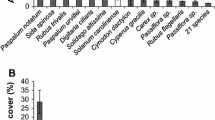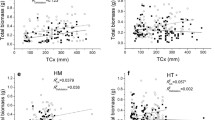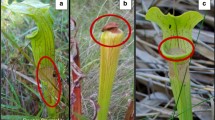Abstract
We compared resistance to insect herbivory in two introduced populations of smooth cordgrass (Spartina alterniflora) differing in their history of herbivory. One population in Willapa Bay, Washington, has spread in the absence of herbivory for more than a century, while another population in San Francisco, California, was introduced 20 years ago and is fed upon by the Spartina-specialist planthopper, Prokelisia marginata. The planthopper is a sap-feeder common on the Atlantic and Gulf coasts of North America, where smooth cordgrass is native. Smooth cordgrass plants from Willapa Bay (WB), San Francisco Bay (SFB), and Maryland (the source of the SFB introduction) were exposed to P. marginata herbivory over two consecutive summers in a common greenhouse environment, and their growth was compared with that of control plants that were grown herbivore-free. The planthoppers had relatively little effect on the growth of SFB plants, with plants exposed to herbivores averaging 77% and 83% of the aboveground biomass of herbivore-free controls after the first and second season of herbivory, respectively. The growth of plants from Maryland was similarly little-affected by the planthoppers, with the plants exposed to herbivores averaging near 100% of the biomass of herbivore-free controls after two seasons. In contrast, the growth of the WB plants was greatly reduced by the planthopper, with the plants exposed to planthopper herbivory averaging only 30% and 12% of the aboveground biomass of herbivore-free controls after the first and second seasons of herbivory, respectively. By the end of the second season of herbivory, 37% of the WB plants exposed to herbivory had died, while none of the SFB plants exposed to herbivores had died. Among WB clones, there was variation in resistance; one WB clone suffered 0% mortality while another suffered 100% mortality when exposed to herbivores. Short-term herbivory experiments with the putative founder clone for the WB population suggested that the WB founder was similar to the more resistant WB clones in its susceptibility to planthopper herbivory. Nitrogen analyses of green leaf tissue indicated that WB plants, including the WB founder clone, averaged 70% more total leaf nitrogen than SFB and Maryland plants. In a planthopper choice experiment, more planthoppers were observed on WB plants than SFB plants after 95 days of exposure to herbivory. Planthopper preference for WB plants may have contributed to the lower resistance of WB plants to herbivory; however, even before planthoppers had become more abundant on the WB plants, the proportion of leaves with 50% or more dead tissue averaged significantly greater on the WB plants, suggesting a difference between populations in tolerance to herbivory as well. Multiple factors, including a founder effect, further loss of herbivore tolerance, and herbivore preference for WB plants, appear to account for the reduced planthopper resistance in the WB population.
Similar content being viewed by others
Author information
Authors and Affiliations
Additional information
Received: 8 March 1996 / Accepted: 16 October 1996
Rights and permissions
About this article
Cite this article
Daehler, C., Strong, D. Reduced herbivore resistance in introduced smooth cordgrass (Spartina alterniflora) after a century of herbivore-free growth. Oecologia 110, 99–108 (1997). https://doi.org/10.1007/s004420050138
Issue Date:
DOI: https://doi.org/10.1007/s004420050138




